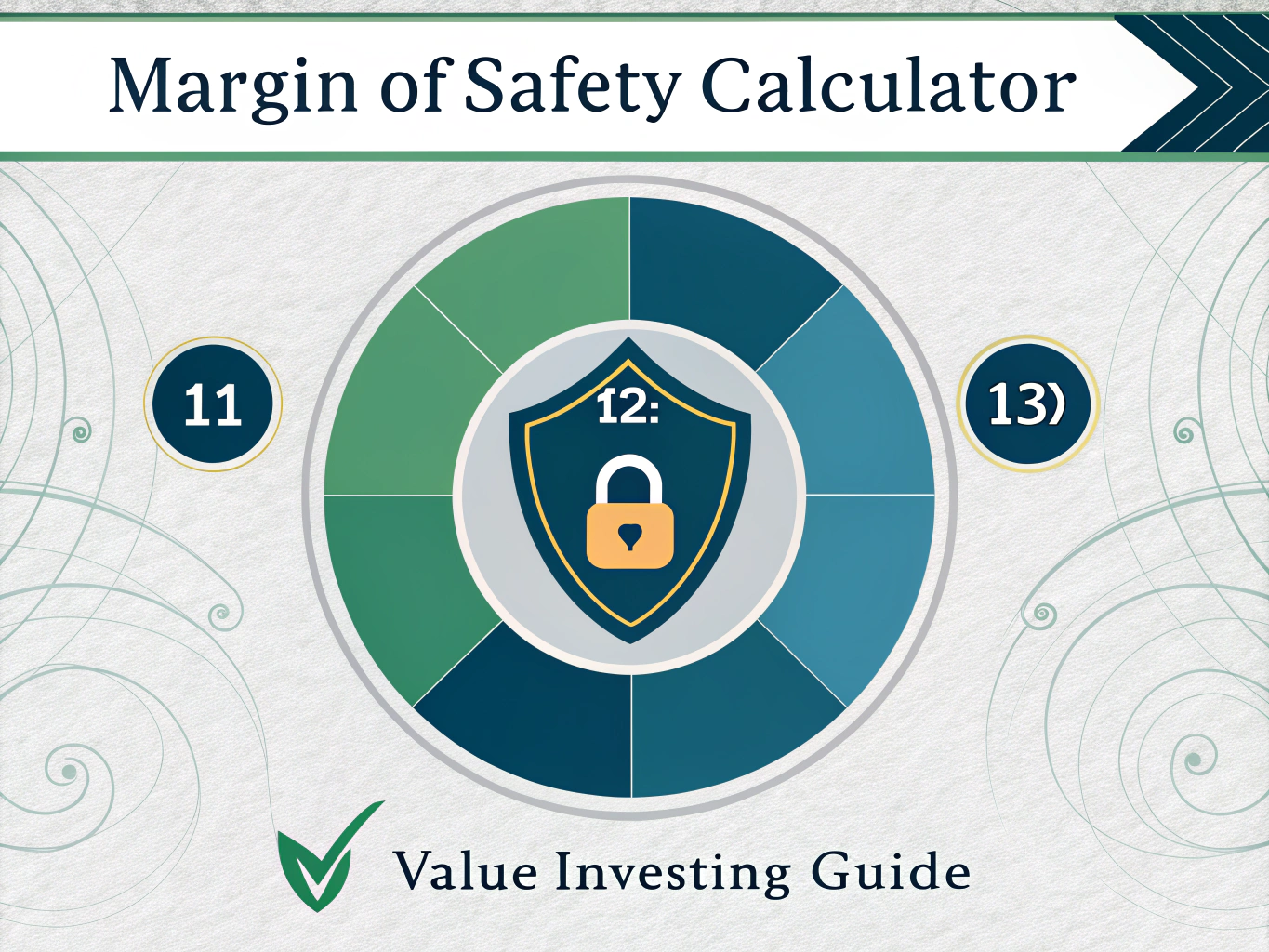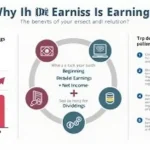Margin of Safety Calculator
Is this tool helpful?
How to Use the Margin of Safety Calculator Effectively
To calculate the margin of safety using Benjamin Graham’s investment model, follow these steps:
- Enter Current Market Price: Input the stock’s current trading price (e.g., $45.75 for Microsoft or $287.30 for Apple)
- Input Price-to-Earnings (P/E) Ratio: Enter the stock’s P/E ratio (e.g., 11.2 for Value Stock A or 13.8 for Growth Stock B)
- Provide Price-to-Book (P/B) Ratio: Input the stock’s P/B ratio (e.g., 1.3 for Financial Stock X or 0.9 for Industrial Stock Y)
- Click “Calculate Margin of Safety” to view results
Understanding the Margin of Safety in Value Investing
The Margin of Safety concept, pioneered by Benjamin Graham, represents the difference between a stock’s intrinsic value and its market price, expressed as a percentage. This fundamental principle helps investors minimize investment risks by providing a buffer against estimation errors and market volatility.
$$ \text{Margin of Safety} = \frac{\text{Intrinsic Value} – \text{Market Price}}{\text{Intrinsic Value}} \times 100\% $$Core Components of the Calculation
- Intrinsic Value: The true worth of an investment based on fundamental analysis
- Market Price: Current trading price of the stock
- P/E Ratio: Price-to-earnings ratio indicating valuation relative to earnings
- P/B Ratio: Price-to-book ratio showing valuation relative to book value
Benefits of Using the Margin of Safety Calculator
- Risk Management: Helps identify potentially undervalued stocks with a safety cushion
- Investment Decision Support: Provides quantitative backing for investment choices
- Portfolio Protection: Aids in maintaining a conservative investment approach
- Market Analysis: Facilitates comparison of different investment opportunities
- Value Assessment: Helps determine if a stock price offers sufficient safety margin
Strategic Advantages for Investors
The calculator implements Graham’s conservative investment criteria:
- P/E ratio threshold of 15 for reasonable valuation
- P/B ratio limit of 1.5 for asset-based safety
- Automated intrinsic value adjustment based on these parameters
Practical Applications and Problem-Solving
Case Study: Value Stock Analysis
Consider a stock trading at $75.00 with:
- P/E Ratio: 14.2
- P/B Ratio: 1.4
The calculator would determine:
- Intrinsic Value: $75.00 (within Graham’s criteria)
- Margin of Safety: 0% (fair valued)
Case Study: Growth Stock Evaluation
Analysis of a stock priced at $120.00 with:
- P/E Ratio: 18.5
- P/B Ratio: 2.0
The calculator would show:
- Adjusted Intrinsic Value: $97.30
- Negative Margin of Safety: -23.33%
Real-World Investment Applications
Portfolio Management
- Screening potential investments
- Regular portfolio revaluation
- Risk assessment of existing holdings
- Comparison of investment alternatives
Market Analysis Scenarios
- Bull market overvaluation detection
- Bear market opportunity identification
- Sector-specific value analysis
- Comparative stock evaluation
Frequently Asked Questions
What is a good margin of safety?
Benjamin Graham traditionally recommended a margin of safety of at least 30% for conservative investors. However, the appropriate margin may vary based on market conditions and individual risk tolerance.
How often should I recalculate the margin of safety?
Regular recalculation is recommended, particularly when significant market changes occur or when company fundamentals change. Quarterly assessment aligns with financial reporting cycles.
Can this calculator be used for all types of stocks?
While the calculator is most effective for value stocks, it can be applied to any publicly traded company. However, growth stocks may require additional analytical considerations.
How does the P/E ratio affect the margin of safety?
Higher P/E ratios above 15 reduce the calculated intrinsic value, resulting in a lower margin of safety. This aligns with Graham’s preference for reasonably valued companies.
What role does the P/B ratio play in the calculation?
The P/B ratio helps assess asset-based valuation. Ratios above 1.5 trigger adjustments to the intrinsic value calculation, reflecting Graham’s emphasis on asset-based investment safety.
How can I use this tool for portfolio diversification?
Use the calculator to analyze multiple stocks across different sectors, ensuring each investment meets your minimum margin of safety requirements for a well-diversified portfolio.
Advanced Usage Tips
Combining with Other Analysis Tools
- Use alongside dividend analysis
- Integrate with technical analysis indicators
- Compare with industry-specific metrics
- Incorporate market cycle analysis
Investment Strategy Integration
- Set personal margin thresholds
- Develop entry and exit criteria
- Create portfolio rebalancing triggers
- Establish risk management parameters
Important Disclaimer
The calculations, results, and content provided by our tools are not guaranteed to be accurate, complete, or reliable. Users are responsible for verifying and interpreting the results. Our content and tools may contain errors, biases, or inconsistencies. We reserve the right to save inputs and outputs from our tools for the purposes of error debugging, bias identification, and performance improvement. External companies providing AI models used in our tools may also save and process data in accordance with their own policies. By using our tools, you consent to this data collection and processing. We reserve the right to limit the usage of our tools based on current usability factors. By using our tools, you acknowledge that you have read, understood, and agreed to this disclaimer. You accept the inherent risks and limitations associated with the use of our tools and services.







